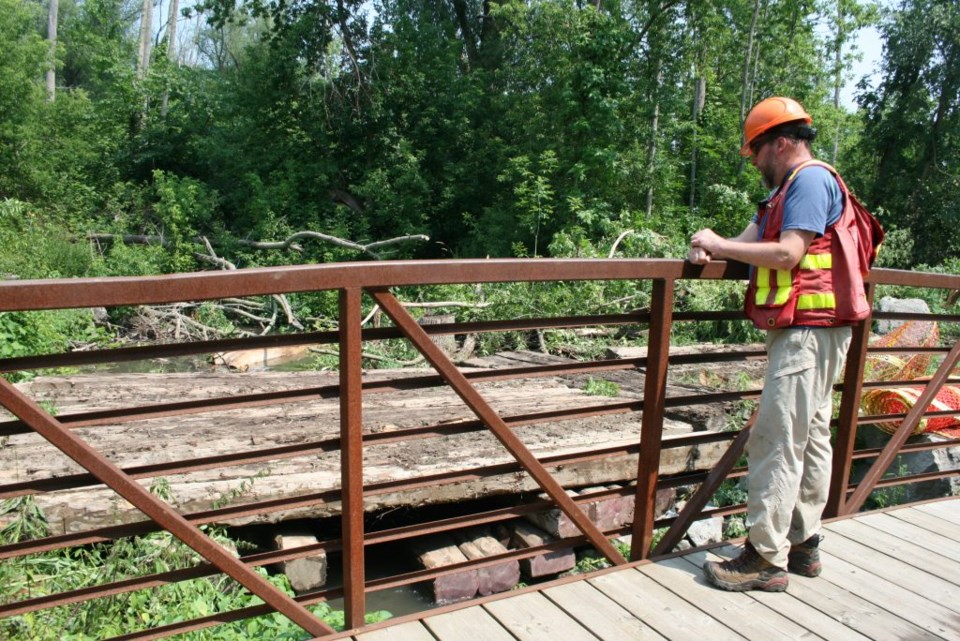
A path is cleared into the forest on the east side of Butler’s Creek
Crews from AECON Six Nations are cutting a swath through hundreds of already-fallen ash trees, using a mobile industrial wood grinder, and taking care to not disturb healthy native species in the forest. The wood chips are to be left on the forest floor, providing mulch and weed protection for the new trees that will be planted, 6,000 of them, next year.
Monday morning, a massive restoration project began in the Two Mile Creek Conservation Area.
The Niagara Peninsula Conservation Authority plans to clear out nearly 400 ash trees, which are being killed by the invasive emerald ash borer.
Dan Drennan, watershed forester with the NPCA, is supervising the project, which is expected to eventually include planting about 6,000 seedlings on native species to replace the forest canopy.
The operation will also address trail-user safety, ecosystem diversity, and creek debris, says a NPCA news release, “while preserving the healthy upland forest in other parts of the site.”
The shiny emerald-coloured beetle was first noticed in North America in 2002, and in Niagara-on-the-Lake in 2012, doing extensive damage since.
“A thorough assessment of the Two Mile Creek site indicated that within the treatment areas, the tree composition is dominated by green ash in the overstory (the highest layer of vegetation in a forest) and Manitoba maple in the understory (the layer of vegetation that lays on the forest floor),” says Drennan.
“There is no significant natural regeneration of non-ash native species that could replace the dying and dead ash trees, and Manitoba maple is not a species the NPCA wants to dominate the site. There are scattered groups of willow that will be retained as much as possible.”
The NPCA describes the operation as a stand conversion, where the dominant ash tree forest cover will be removed and replaced with a young forest of mixed tree species, through subsequent reforestation activity.
The ash tree forest cover will be replaced by native deciduous and coniferous trees appropriate to the site conditions and native to the seed zone.
The seedlings are intended to encourage the reestablishment of a healthy, resilient and diverse ecosystem that will support a variety of wildlife, and improve the overall water quality in Two Mile Creek.
With files from Mike Balsom